The Wheel And The Knife
The ecstatic and drastic rituals of Russia’s radical Christian sects.
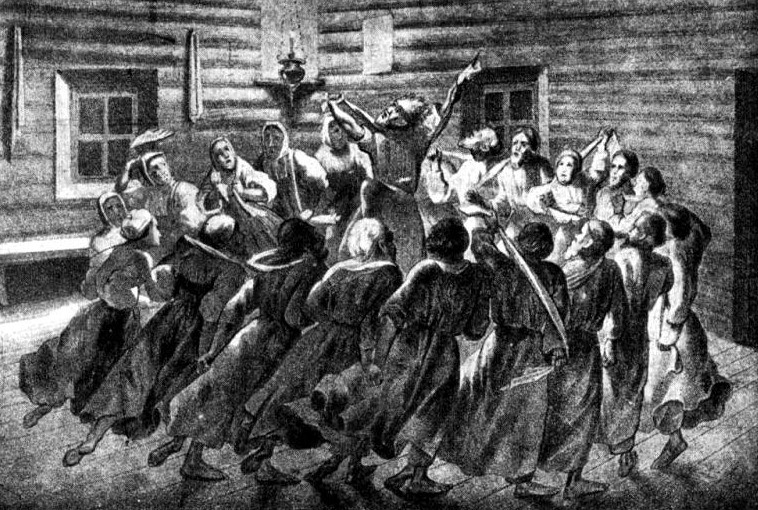
Whether at home or on the road, a true servant of God must always be alert to the snares of the devil. The year is 1717. The Russian Orthodox monk Antonii is on holy pilgrimage. Weary from his journey, he stops in a home for wayfaring strangers outside the town of Uglich, north of Moscow. There he meets two widows, Kapetolina and Avdotiia. From their conversation he realizes that they must be heretics. He pretends to be a fellow schismatic, and begs to meet their teacher. They refuse — it is forbidden — but they promise to ask his permission in the future. Antonii thanks them for their consideration. The next day he denounces the two old ladies to his superior, the archimandrite.
An investigation begins; arrests are made. Gradually, the truth emerges: the women belong to a sect, which has long met in secret. Its leader is a former soldier who says he is Christ. Its members include a farm worker, a cloth-seller, a merchant of butter. They do not drink or marry. They say they do not fornicate. Instead, they meet at night in secluded houses, sing hymns and dance to exhaustion.
The 1717 investigation marks the entry into official history of a group that called itself God’s People, but which was widely known as the Khlysts. In their rituals and beliefs, the Khlysts tried to solve an old puzzle: How to live in a world without God, where holiness is missing and even his prophets are silent or far away? Their answer was to pursue ecstasy, everywhere, even at pain of death. In time, the Khlysts gave rise to a rival, or offshoot sect with very different ideas. These were the Skopts, and they believed that the way to holiness lay in extreme renunciation: not just of sex, but of the very organs that mark sexual difference. Now, their practices might seem grotesque or obscene. But they carry a lesson, of how hard it is to square belief with life and how much we might need to give up if we want to make life paradise.

This was the question posed by two Christian sects, the Khlysts and the Skopts, which operated in Russia several centuries before the revolution of 1917. Both were heretical offshoots of the Orthodox Church. One was accused of leading its followers deep into the woods of sexual profligacy. The other publicly urged its members to engage in self-castration. Both were frequently persecuted by the state, and widely despised by the people.
The story of the Khlysts begins in the 17th century, in the province of Kostroma, with a peasant (and perhaps, a runaway soldier) named Danila Filippovich. Unusually for the time, Danila could read and write, and he knew Scripture. He travelled across Russia and preached. One day in 1645, on a hill in village of Gorodina in the Province of Vladimir, the godhead descended upon Danila in his fiery cart, trailed by angels and seraphim. Henceforth, he regarded himself the Living God. He issued commandments like Moses on Mt. Sinai. He announced that there was no teaching but his. From now on, the only book that mattered was the “dove-like” book written in the heart by the Holy Spirit. To prove his point, he took all the books he owned, put them in a sack, and threw them in the Volga River.
After fifteen years of wandering, Danila came across a spiritual son in the manner of St. Paul. His name was Ivan Suslov. According to legend, his parents were both a hundred years old when he was born, and they were so poor they used a broken pig trough for a cradle. When Suslov was thirty-three, he met Danila, who named him his Jesus Christ. He worked miracles. Twice he was crucified, and twice he rose from the dead. The second time he was also flayed, on the order of the czar. When returned to earth a young girl covered him in a sheet which stuck fast and became a second skin. He levitated, and he flew. With Danila, he visited heaven three nights in a row. He was buried in the village of Kriushino in the province of Kostroma.
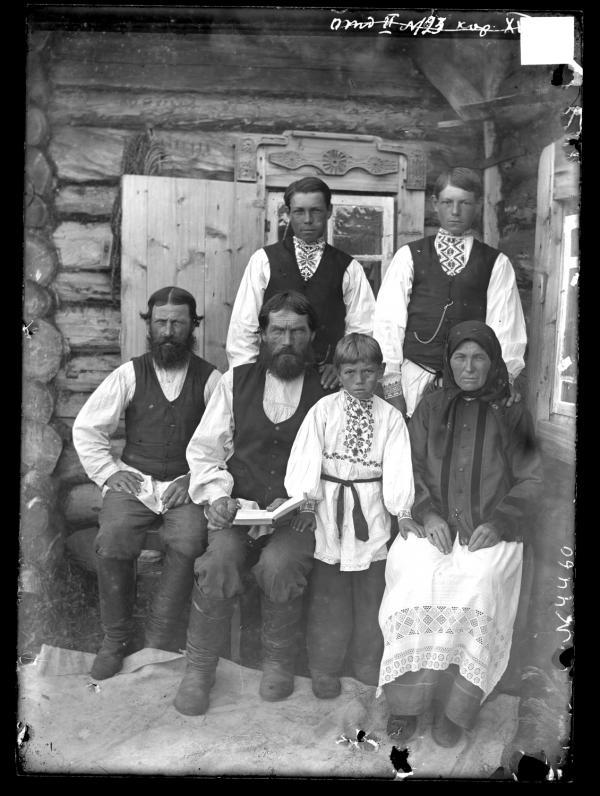
Suslov and Filippovich gathered many followers. After their deaths (or, ascensions) those followers recruited followers of their own. They called themselves the Christs, or Khristy. Outsiders, noticing their habit of flagellating themselves, nicknamed them the Whips, or, in Russian, Khlysty. The Khlysts believed that Jesus was born like any other man. He was no different from other men until the age of thirty, when the Holy Spirit anointed him and made him God’s son. And if the Holy Spirit could enter one man, it could enter others as well, even women. It stood to reason then that there could be many Christs, and many Mothers of God. The Khlysts’ aim was to bridge the world of the supernatural and the present, to merge divine time with our own, but hardly any of them would admit to it in public.
The great Russian folklorist Andrei Sinyavsky has called the Khlysts the most interesting, as well as the most impenetrable, sect in Russian history. This is because the Khlysts kept the true nature of their beliefs hidden from the profane. Novices, upon being accepted into the sect after long trials, had to take a special oath: “I vow to keep secret all that I shall see and hear at meetings, never sparing myself, never fearing the knout, the stake, the sword or any other torment!”
The Khlysts believed that lying was a sin, but only when the lie was committed before God. To conceal themselves from persecution, they became masters of dissembling. When missionaries denounced the Khlysts to their face, they acted horrified that anyone could believe such horrible untruths. When priests asked, “Have you sinned?” the Khlysts would reply: “I am guilty before you. Father.” When the priests gave them wine to drink at Mass they would keep it in their mouths and wait until the service was over to spit it out.
The Khlysts called their communities “ships” or korabl’ because they felt themselves to be abandoned on the sea of the profane world. Each ship had a helmsman. If it was a man, he was called their “Christ.” If the community was run by a woman, she was known as the “Virgin.” They abjured onions and garlic, for they were thought to mask the odor of sanctity which they detected in one another. They avoided meat, because it was the product of copulation. And they avoided the potato, believing it to be the true shape of the fruit with which Eve tempted Adam.
For all its prohibitions, the core of the Khlysts’ religious practice was about a conscious pursuit of ecstasy. They called their main rites radenie, a word that means zeal, but also connotes fervor, and joy. Radenie were typically conducted at night, in a cottage far removed from neighbors. Here, the Khlysts sought God in dance. In ones or twos, they spun like dervishes, twirling until the candles in the hut blew out and they collapsed exhausted, drenched in sweat. Sometimes they would gather together in larger numbers for ‘ship,’ or ‘round,’ dance in a ring around a vat of water. As they danced, the Khlysts spun in a circle and flagellated themselves. Suddenly, a whirl would appear in the water, a sign that the Holy Spirit had appeared. Sometimes the water would boil and bubble, and the baby Jesus would appear in the steam. Then the Khlysts would take the water home and consume it, getting “drunk” on what they called “spiritual beer.”
Music was a mainstay of Khlyst worship. They had a gift for composing hymns. According to a Khlyst saying, “A song (pesenka) is a ladder (lesenka) to God.” Their music was strange and haunting. It had something in common with the music of American Shakers and shape-note singers. Frederick Cornwallis Conybeare, an English scholar of religion, wrote of once seeing a group of them in procession on the solitary plains between Yerevan and Mt. Ararat. He called it “the most stirring devotional music I have ever listened to, adding “No one who has encountered them will forget their deep-set intensely gleaming eyes, their spare emaciated frames, their reposeful manner. They seem to have dropped out of another world into this one.”
In this world though, the Khlysts were treated with constant hostility and suspicion. Their night-time rituals gave rise to many unsavory rumors. It was thought that they engaged in group marriage, and that their radenie ended in orgies. Numerous police searches and raids failed to turn up anything salacious. But the Khlysts varied — every ship was governed by its own Christ, and each Christ obeyed the will of the Holy Spirit. Sometimes this meant that their worship veered off even further from the mainstream.
In Ivan the Fool, Sinyavsky relates how in the mid-19th century, “a 29-year-old ‘Christ’ by the name of Vasily Radaev confessed that he had slept with all of his female followers.” During an interrogation he explained, “I copulated with them all, but I did not allow others to, I copulated with them not of my own free will, but by the will of the Holy Spirit.”Radaev seems to have stumbled upon the old antinomian principle that the only way to fight sin is with sin. The Skopts, an offshoot of the Khlysts, came to the exact opposite conclusion. They made the suppression of sexuality the absolute center of their belief, and they pursued this goal by means that have inspired lasting revulsion, as well as misunderstanding.

The origins of the Skopt sect are unclear, but they seem to have been an offshoot of the Khlysts, from whom they borrowed the practices of the radenie and the round dance. To this they added the radical principle of castration. The Skopts (their name means ‘the Castrated Ones’) believed that in Paradise, the first people created by God were without sex. Breasts and genitals were only added to the human form after the Fall. They were thus literal fruits of Satan, deformities, and as such, had to be cut off.
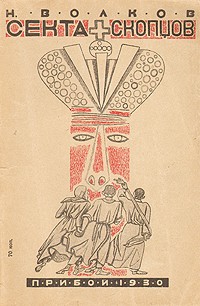
Like the Khlysts, the Skopts practiced their faith in secret. Their symbol was the dove, their patron was St. George, and their instrument was the knife. They called castration “mounting the white horse” or “receiving the great seal.” There were greater and lesser seals. To have one’s nipples and testicles excised meant becoming an angel. Losing the breasts and penis as well made one an archangel.
Before accepting castration, a Skopt prepared for death by saying farewell: “Farewell sky, farewell earth, farewell sun, farewell moon, farewell lakes, rivers and mountains, farewell all earthly elements.” If they survived the procedure, which was conducted without anesthesia, they would find themselves reborn in a heavenly body.
The Skopts’ first recognized prophet was a man named Kondratii Selivanov. He was a peasant, born sometime around 1732 in the province of Orel. In his youth, he belonged to a Khlyst ship headed by a Virgin Mother named Akulina. A prophetess named Anna recognized the young beggar as the true son of God. Selivanov began preaching, but he had trouble persuading Akulina’s congregation to accept castration. So, in his words, he “set out across the damp earth,” showing everyone purity. In time, he acquired one disciple, then many.
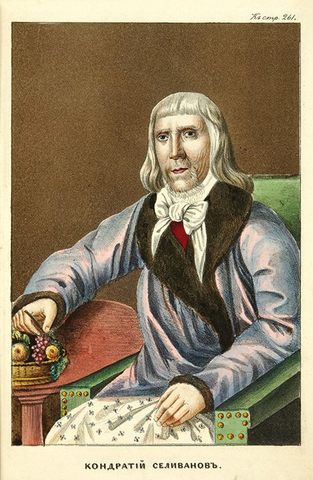
Eventually, he had so many that the authorities became alarmed. Selivanov’s disciples were exiled to Riga. He was imprisoned in Irkutsk. There, he began to preach that Akulina had actually been the Empress Elizabeth, in disguise, and that he was her son, the Tsar Peter III, escaped from the grave. This was treason, and it earned him the knout.
But then, a reversal of fortune: Peter III’s son, Paul ascended to the throne. He revered his father. He even crowned his skeleton before crowning himself. Then he summoned the Siberian stranger who claimed to be his father to St. Petersburg for an audience. It is unknown what they discussed in their meeting. According to one rumor, Paul asked Selivanov if he was his father. Selivanov replied that if Paul would take up his cause (castrate himself), he would become his spiritual son.
The Emperor did not castrate himself. Instead, he had Selivanov confined to an asylum. But soon the Emperor was dead, and a new Tsar — Alexander — was on the throne. Alexander freed Selivanov from prison. He went to live with some wealthy merchants who followed his faith. One of Alexander’s ministers, a chamberlain named Alexei Elyansky, took a special liking to him. He conceived of a plan to turn all of Russia into a single Skopt ship. State prophets would direct every branch of government. Elyansky and twelve other castrated holy men would command the army. The Tsar would be advised at all times by Selivanov himself. Special prophets would serve on battleships, “so as to offer the captain advice with the voice of heaven before going into battle.”
The tsar rejected Elyansky’s scheme, and had him confined to a monastery. In 1805 though, Alexander visited Selivanov before leaving for his first campaign against Napoleon. Afterward, persecution of the Skopts largely ceased; they were warned not to engage in any more castrations, and not otherwise harmed.
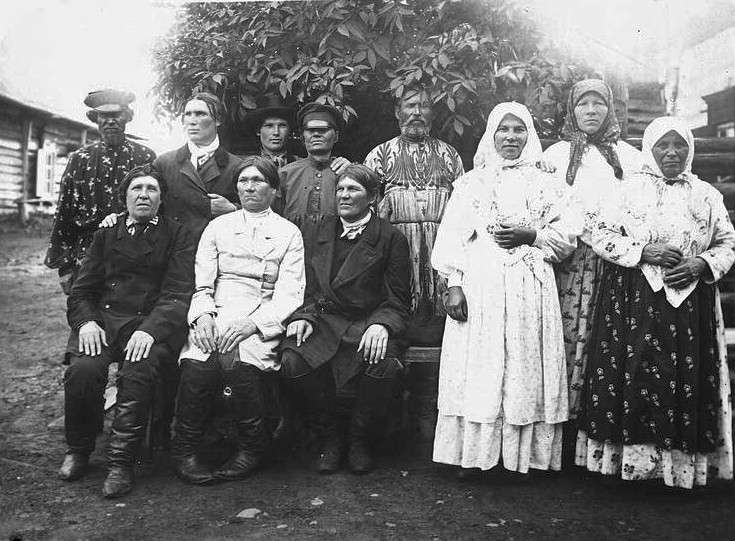
Selivanov died in 1832. For decades, his followers refused to accept that he was dead, awaiting his return. Despite their inability to procreate, their numbers continued to increase. At their height in the late 19th century, they may have had as many as 100,000 followers. They became known for their probity, frugality, and devotion to hard work. Some managed farms. Others lent money, but never to other members of their faith. Many grew rich. They lived as model citizens — honest, respectful, and careful not to draw too much attention.
Still, they were persecuted by the government, church, and society. Some were exiled to Siberia. Others fled to Romania, where they dominated the horse-cab business. In Russia, they were tried in the courts, courted by missionaries, studied by ethnographers and denounced by the bishops. Though they inspired disgust in many, they also elicited a curious fascination. The most sympathetic treatment of the Skopts came from members of the revolutionary left.
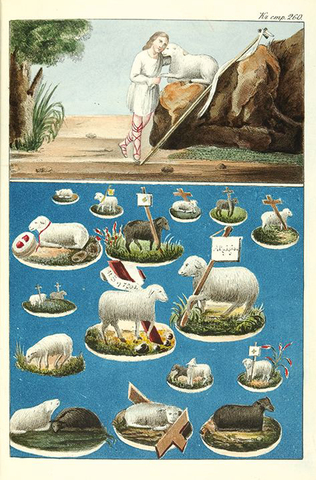
The radical opposition had long felt a kinship with the Skopts and other schismatics. Heresy was the Russian way of revolt, the thinking went; breaking with orthodoxy was the first step in breaking with the Tsar. Populists, nihilists and socialists all sent representatives to the different sects. One of the most perceptive students of the Skopts, was the Bolshevik Vladimir Bonch-Bruyevich. He went on to become Lenin’s personal secretary and helped set the Red Terror in motion. Later still, he helped organized a museum of atheism in Moscow where a display on the Skopts featured as a central exhibit.
They make a strange pair: the hardened Bolshevik, using terror to usher in modernity, and the archaic-seeming sect mutilating their bodies to remove the taint of original sin. In their own way, the Skopts had embarked on a social experiment no less radical than that of the revolutionaries. In pursuing castration, they removed the great stumbling block to utopia: desire. After all, what makes us more selfish than love? The Skopts redirected the passion reserved for children and lovers to the community as a whole — they lived in communes, not families, and held property in common. Their kin were determined by belief, not blood.
In other places and times, this would be known as communism. Across the centuries, the Khlysts and Skopts ask, is it better to live for joy or purpose? Dance, make love, get drunk on the joy of the body say the Khlysts, to the sound of whips. Mortify the flesh, punish the body, and be free, say the Skopts, to the sound of bells.
